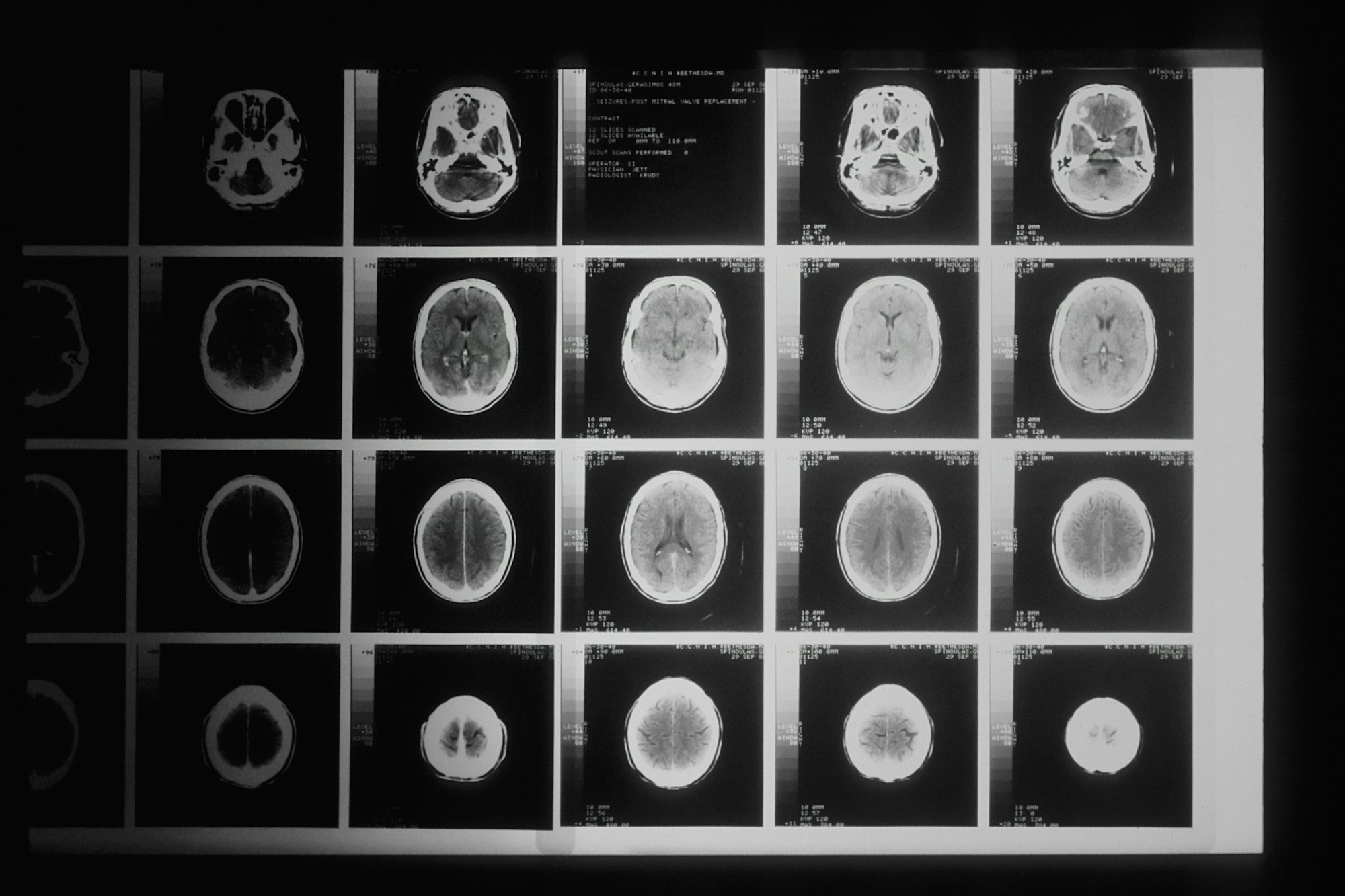Understanding Primary Progressive Aphasia: Symptoms, Treatments, and More
People with primary progressive aphasia, a degenerative language disorder erodes communication abilities over time. the different types of primary progressive aphasia, We address the challenges in diagnosis, and the treatment options available

Imagine having a world of words at your fingertips, only for them to slowly slip away as you struggle to express yourself or understand others. This is the reality for people with primary progressive aphasia, a degenerative language disorder that erodes communication abilities over time. In this blog post, we’ll delve into the different types of primary progressive aphasia, the challenges in diagnosis, and the treatment options available. Together, we’ll explore coping strategies and support to help those affected by this condition maintain their quality of life.
Key Takeaways
- Primary Progressive Aphasia is a progressive language disorder caused by brain tissue damage, leading to difficulty communicating and cognitive decline.
- Diagnosis of PPA can be challenging due to overlapping symptoms with other neurodegenerative diseases. Treatment options like speech-language therapy & medications may help manage symptoms.
- Coping strategies such as communication aids and support groups are available for individuals affected by primary progressive aphasia and their families.
Understanding Primary Progressive Aphasia

Primary progressive aphasia (PPA) is a neurodegenerative disorder that results in a gradual deterioration of language function, often manifesting as difficulty in expressing ideas, comprehending language, and eventually losing the capacity to speak and write. This language impairment, also known as primary progressive apraxia, can be either fluent or non-fluent, and may or may not affect word understanding. Unlike Alzheimer’s disease dementia, which primarily affects memory, PPA is characterized by asymmetric atrophy of the language-dominant hemisphere in the brain.
The driving force behind primary progressive aphasia is brain tissue damage in the areas responsible for language and speech. This damage, often occurring on the left side of the brain, leads to the hallmark primary progressive aphasia symptoms, including difficulty speaking, understanding, and writing. Primary progressive aphasia may worsen over time as the damage progresses.
As the neurodegenerative disease progresses, the atrophy of brain tissue continues to impact communication abilities and other cognitive functions in various parts of the brain, making daily life increasingly challenging for those affected and getting worse over time.
Progressive nature of the disorder
The relentless progression of primary progressive aphasia, which gradually erodes communication abilities and impacts daily life, is one of its most striking aspects.
As the disorder advances, individuals may experience increasing difficulty with:
- speaking
- comprehending
- reading
- writing
- problem-solving
- memory
- other cognitive functions
This progressive decline, which may involve the protein TDP 43 and be influenced by underlying diseases, emphasizes the importance of early diagnosis and intervention to help manage symptoms and improve quality of life.
Types of Primary Progressive Aphasia

There are three main types of primary progressive aphasia, each with its own unique characteristics: semantic variant, nonfluent agrammatic variant, and logopenic variant. Providing tailored support and interventions for individuals experiencing varying symptoms and challenges necessitates understanding these different types.
We shall now examine each of these variants and their distinct features more closely.
Semantic variant characteristics
Semantic dementia, also known as semantic variant aphasia, is characterized by:
- Trouble understanding word meanings
- Using vague terms to describe objects and concepts
- Gradual decline in semantic knowledge
- Struggling to understand the meaning of words
- Finding the correct words to use
- Recognizing familiar places and people
Semantic variant aphasia may lead individuals to eventually stop speaking altogether or have a severely limited vocabulary as the illness progresses.
Nonfluent agrammatic variant characteristics
Nonfluent agrammatic variant aphasia presents challenges in speech production, even when the person knows what they want to say. This variant is characterized by difficulty with the movements of the lips and tongue needed for speech, leading to distorted or incorrect speech sounds and slow, labored speech.
Additionally, individuals with nonfluent agrammatic variant aphasia may struggle with effortful speech, poor grammar, and distorted prosody (pattern of pitch contours in speech), which are some of the language disorder-related aphasia symptoms.
Logopenic variant characteristics
Logopenic variant aphasia primarily affects word-finding abilities and sentence repetition, yet grammar and comprehension remain intact. This variant is typically caused by Alzheimer’s disease, which is also the underlying cause of Alzheimer’s disease dementia, and is marked by intermittent word-finding difficulties.
Despite these challenges, individuals with logopenic variant aphasia can still demonstrate preserved language skills, such as understanding and grammar, making it a unique form of primary progressive aphasia. In this context, their written language abilities may also remain relatively intact.
Diagnosing Primary Progressive Aphasia

Diagnosing primary progressive aphasia can be a complex process due to the overlapping symptoms with other disorders. To accurately diagnose PPA, healthcare providers typically use a combination of:
- Language and cognitive tests
- Blood tests
- Neurological examination
- MRI
These assessments help confirm the diagnosis, determine the aphasia subtype, and identify any non-language disorders present.
The challenges that come with getting primary progressive aphasia diagnosed deserve our attention.
Challenges in diagnosis
One of the main challenges in diagnosing primary progressive aphasia is differentiating it from other neurodegenerative diseases and identifying the specific variant. The overlap of language symptoms with other conditions can make it difficult to pinpoint PPA as the underlying cause. In addition, the progressive nature of language decline can further complicate the diagnostic process.
Accurate diagnosis, despite these challenges, allows for the implementation of appropriate interventions and support for those affected.
Treatment Options for Primary Progressive Aphasia

While there is no cure for primary progressive aphasia, treatment options are available to help manage symptoms and improve quality of life. The primary treatment for PPA is speech-language therapy, which can help enhance communication skills and alleviate some of the challenges caused by the disorder. In addition to therapy, medications and supplements may be prescribed to manage symptoms, although their effectiveness varies from person to person.
A deeper exploration into these treatment options and their potential benefits is warranted.
Speech-language therapy
Speech-language therapy is a key component in the management of primary progressive aphasia, as it focuses on helping individuals improve their communication skills and overall quality of life. Through tailored interventions, speech-language therapists can address specific language impairments and provide strategies to enhance communication abilities, such as restitutive and compensatory treatments.
In addition to direct therapy, speech-language therapists can also provide:
- Support and education for family members and caregivers, ensuring they understand the unique challenges faced by individuals with primary progressive aphasia
- A collaborative approach that empowers both the person with PPA and their support network
- A more effective communication environment
- Enhanced quality of life for all involved
Medications and supplements
It should be noted that while medications and supplements may be prescribed to help manage symptoms, their effectiveness varies from person to person. There are no specific medications or supplements proven to treat primary progressive aphasia, and their role in symptom management is largely dependent on individual response.
Therefore, a collaborative approach between individuals with PPA and their healthcare providers is essential in determining the most appropriate treatment plan based on their unique needs and circumstances, as PPA may vary in its presentation and progression.
Coping Strategies and Support

Living with primary progressive aphasia can be challenging, but there are coping strategies and support available to help individuals and their families navigate this complex condition. Some resources that can provide valuable assistance in maintaining quality of life and managing the challenges of PPA include:
- Communication aids
- Speech therapy
- Support groups
- Counseling or therapy for emotional and psychological support
These resources can help individuals with PPA and their families find ways to communicate effectively, cope with changes in language and cognition, and navigate the emotional impact of the condition.
A detailed exploration of these coping strategies and support options is now in order.
Communication aids
Communication aids can play a vital role in helping individuals with primary progressive aphasia maintain their ability to communicate. These aids can include sign language, laminated cards with commonly used words or phrases, and voice synthesizers. By providing alternative means of communication, these aids can help bridge the gap created by language impairments and facilitate more effective interactions between those with PPA and their loved ones.
Emotional and psychological support
Providing emotional and psychological support is key for individuals with primary progressive aphasia and their families to cope with the challenges of the disorder. Support groups, educational programs, and psychosocial interventions can provide invaluable resources for understanding PPA, reducing distress, and fostering a sense of community and belonging.
In addition to group-based support, aphasia-modified cognitive-behavioral therapy (CBT) can be beneficial in addressing mood and communication-related issues. This form of psychotherapy helps individuals recognize and alter negative thoughts and behaviors that can cause distress, while also providing them with strategies for managing their language impairments.
A comprehensive approach addressing both the emotional and communication aspects of primary progressive aphasia enables individuals and their families to navigate the complexities of this condition more effectively, thereby maintaining a higher quality of life.
Risk Factors and Prevention
Although there are no known methods for preventing primary progressive aphasia, identifying potential cases and implementing early interventions can be facilitated by understanding the risk factors associated with the disorder. Age, family history, and certain genetic mutations are all potential risk factors for PPA.
Older adults are more likely to develop frontotemporal dementia, and a family history of primary progressive aphasia can also increase one’s risk. Despite the complex nature of the disorder, being aware of these risk factors can pave the way for earlier diagnosis and more effective support for those affected.
Summary
In conclusion, primary progressive aphasia is a complex and challenging condition that impacts language abilities and communication skills. With various types and symptoms, accurate diagnosis and tailored interventions are crucial in managing this disorder. Treatment options such as speech-language therapy and medications can provide some relief, while coping strategies, communication aids, and emotional and psychological support can improve the quality of life for those affected. By raising awareness of primary progressive aphasia and its risk factors, we can foster a more understanding and supportive environment for individuals and their families as they navigate the challenges of this condition.
Frequently Asked Questions
What is primary progressive aphasia?
Primary progressive aphasia (PPA) is a neurological disorder that affects a person's ability to speak and communicate. It is characterized by difficulty expressing thoughts and understanding or finding words, which gradually worsen over time. PPA is caused by damage to key parts of the brain responsible for understanding or producing speech and/or writing.
What is the life expectancy of someone with primary progressive aphasia?
On average, people with primary progressive aphasia (PPA) live between 7 to 12 years after diagnosis. While the disorder gradually reduces their language skills, it doesn't appear to be a direct cause of death.
What is an example of primary progressive aphasia?
Primary progressive aphasia is characterized by gradual onset of speech or language issues, such as difficulty finding the right word and poor grammar. Additionally, comprehension problems may arise, such as not understanding long sentences, and trouble repeating phrases or words. One variant, Logopenic Progressive Aphasia, causes individuals to have difficulty finding common, everyday words.
What happens with primary progressive aphasia?
Primary progressive aphasia is a rare neurological syndrome that causes gradual damage to the parts of the brain responsible for speech and language. Symptoms include difficulty speaking, understanding conversations, naming objects, and finding words. Over time, symptoms worsen until they can no longer communicate effectively.
What stage of dementia is aphasia?
Primary progressive aphasia (PPA) is the stage of dementia that includes aphasia, affecting language skills, speaking, writing and comprehension. It typically occurs in midlife, before age 65.
What are the initial symptoms of Primary Progressive Aphasia?
The initial symptoms of Primary Progressive Aphasia include difficulty finding words, substituting words incorrectly, and struggling to understand spoken or written language. These symptoms may be subtle at first but gradually become more pronounced, affecting everyday communication and language tasks.
How is Primary Progressive Aphasia diagnosed?
Primary Progressive Aphasia is diagnosed through a combination of medical history, neurological examinations, and language assessments conducted by a speech-language pathologist. Imaging studies, such as MRI or PET scans, may also be used to identify patterns of brain atrophy associated with the condition. A thorough evaluation by a neurologist is essential for an accurate diagnosis.
What treatments are available for Primary Progressive Aphasia?
While there is no cure for Primary Progressive Aphasia, treatment focuses on managing symptoms and maintaining communication abilities. Speech therapy can help individuals develop alternative communication strategies and improve language skills. Medications may be prescribed to manage associated symptoms or underlying conditions. Support groups and counseling can provide emotional support for individuals and their families.
What are the final stages of Primary Progressive Aphasia?
In the final stages of Primary Progressive Aphasia, individuals may lose nearly all language abilities, including speaking, understanding, reading, and writing. Communication becomes extremely challenging, and individuals often rely on nonverbal methods to interact with others. During these stages, cognitive and physical decline may also occur, requiring comprehensive care and support from caregivers and healthcare professionals.
How can families support a loved one with Primary Progressive Aphasia?
Families can support a loved one with Primary Progressive Aphasia by learning effective communication techniques, such as using gestures, visual aids, and simple language. Encouraging participation in speech therapy and providing a supportive and patient environment is crucial. As the condition progresses, coordinating care with healthcare professionals and considering long-term care options may become necessary.
Are there resources available for individuals and families dealing with Primary Progressive Aphasia?
Yes, there are many resources available for individuals and families dealing with Primary Progressive Aphasia. These include support groups, educational materials, and organizations specializing in neurodegenerative diseases and aphasia. Consulting with healthcare providers and speech-language pathologists can also provide valuable guidance and access to appropriate resources.
By understanding Primary Progressive Aphasia and its progression, individuals and their families can better prepare for and manage the challenges associated with this condition.
Our Resources section can help you find the information and tools that you need. We have courses, videos, checklists, guidebooks, cheat sheets, how-to guides and more.
You can get started by clicking on the link below. We know that taking care of a loved one is hard work, but with our help you can get the support that you need.
Click here to go to Resources Section now!





